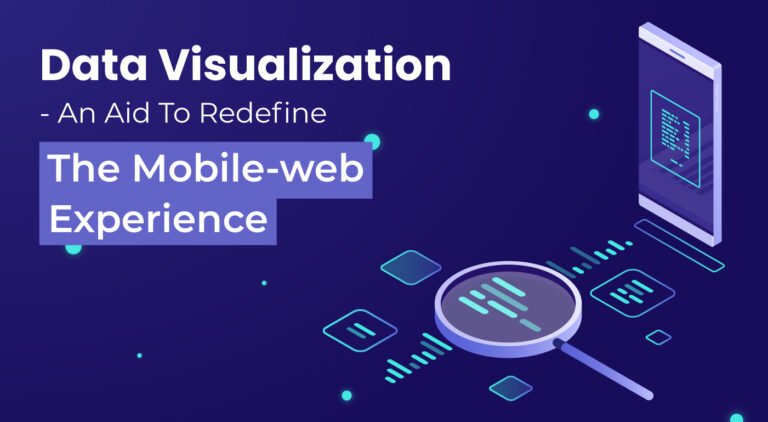12 Jun, 2022 | web page design
Data Visualization- An Aid To Redefine The Mobile-web Experience

-
Adding modern data visualization formats:
-
Including filterable data visualizations:
-
Make your data visualization interactive:
Frequently Asked Questions
Some of the common challenges faced in implementing data visualization in a mobile web experience include difficulty in optimizing performance to ensure smooth and quick loading, designing user-friendly and aesthetically pleasing visualizations that are easy to navigate on a smaller screen, and ensuring that the data being presented is accurate and meaningful to the user. To address these challenges, it might be helpful to work closely with a team of experienced designers and developers, conduct extensive user testing and feedback, and utilize tools and technologies specifically designed for mobile data visualization.
Data visualization is essential in shaping mobile web experiences as it enables more efficient and effective communication of information. It allows users to interpret large amounts of data quickly and easily, making it an essential tool for businesses looking to stay ahead of the competition. In the future, we can expect to see more advanced data visualization technologies used in mobile web experiences, as well as increased integration with other emerging technologies such as artificial intelligence and virtual reality.
First and foremost, it's important to understand the key principles of data visualization before diving in. Make sure you're familiar with the best practices for creating effective and engaging visualizations, and have a clear understanding of your target audience and their needs. Consider investing in tools or software that can help you create attractive and user-friendly visualizations, and don't be afraid to collaborate with experts in the field to ensure you're maximizing the potential of your data. Finally, be prepared to iterate and refine your visualizations over time, based on user feedback and data-driven insights. With the right strategy and approach, data visualization can be a powerful tool for enhancing the mobile user experience and driving business success.
Some key challenges that businesses may face when integrating data visualization into their mobile web strategies in the UK include: 1. Limited screen space: Mobile screens have limited space which can make it challenging to fit all the necessary data elements without overwhelming the user. 2. Data relevance: It can be difficult to determine what data is relevant to display on a mobile interface, and what may be better off saved for desktop viewing. 3. Performance: Integrating data visualization can take a toll on the performance of the mobile website or app, which can lead to slower load times and decreased user engagement. 4. Compatibility issues: Data visualization tools may not always be compatible with different mobile devices or web browsers, which may lead to distorted or incomplete views of the visualized data. 5. Technical expertise: Creating and maintaining quality data visualizations requires a certain level of technical expertise and analytical skills, which may be lacking within the business.
Implementing data visualization techniques such as graphs, charts and infographics can enhance the user's experience on your website on mobile devices. Simplifying the information displayed on the mobile screen and presenting it in a visually appealing way increases engagement by making it more accessible and easier to understand. Additionally, incorporating interactive features such as zooming and scrolling can provide a seamless and intuitive way for users to view and interact with the data. This can ultimately improve the functionality, performance and user satisfaction of your website on mobile devices.

